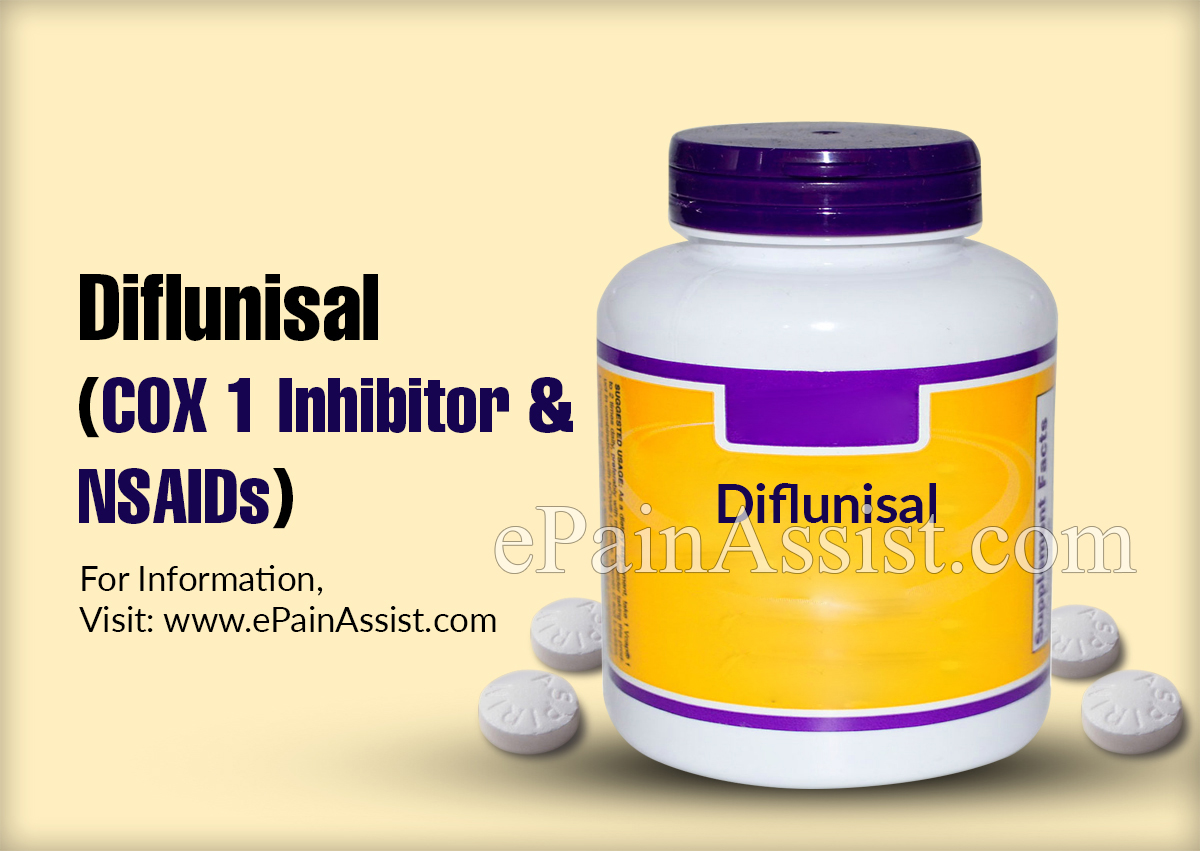Diflunisal is NSAID classified under group salicylic acid derivatives. Diflunisal was available in 1971. Diflunisal has similar side effects as aspirin. Diflunisal is used less frequently as compare to aspirin. Diflunisal was found to be better analgesic than naproxen.

Alternative Name of Diflunisal
Diflunisal is also known as Dolobid.
How Does it Work: Mechanism of Action of Diflunisal
Diflunisal inhibits cyclooxygenase 1 and 2 (COX 1 and COX 2) enzyme resulting in decreased secretion of prostaglandin. The decreased secretion of prostaglandin within inflamed tissue helps to relieve symptoms like pain and fever.
Uses: Diflunisal Used For Treatment Of Following Symptoms.
Pain- Diflunisal reduces nociceptive pain caused by tissue trauma and inflammation. Pain caused by fracture or dislocation is also treated with Dolobid. Post-operative mild to moderate pain is occasionally treated with Dolobid.
Inflammation- Dolobid decreases the amount of prostaglandin and reduces intensity of inflammation.
Fever- Diflunisal acts as an antipyretics and reduces Fever.
Diflunisal Used To Treat Following Diseases.
Arthritis– Diflunisal is used to treat acute pain and inflammation caused by osteoarthritis and rheumatoid arthritis. The medication helps to reduced edema and tissue swelling of the joint as well as pain.
Injury- muscle tear, Injury to tendons and ligament laceration;
Pain caused by diseases like amyloidosis;
Contraindications: Diflunisal is Avoided In Following Condition-
History of aspirin hypersensitivity;
Pregnancy- during second and third trimester;
Coronary after bypass surgery;
Diflunisal is Prescribed With Precaution In Following Condition.
- Elderly patient;
- Malnourished and dehydrated individual;
- Hypertension and Congestive heart failure;
- Abnormal liver and kidney function;
- Fluid retention;
- History of gastrointestinal bleeds/PUD;
- Asthma;
- Coagulopathy;
- Ace inhibitors;
Dosage of Diflunisal.
250 mg and 500 mg tablets giver 3 to 4 times a day. Maximum dose tolerated by adult is 2,000 mg.
Duration of Action.
The onset time for medication to act at optimum level is one hour and the duration of maximum pain relief last for 3 hours. Overall duration of action lasts for 12 hours. Thus subsequent dosage requirement in milligram decreases with time as well as duration of maximum pain relief lasts from 3 hours to 4 hours.
Side Effects Caused by Diflunisal
- Gastric and duodenal ulcer formation;
- Stroke like symptoms- feeling of numbness and weakness on one side of the body;
- Abdominal pain and cramps;
- Chest pain and shortness of breath;
- Severe dizziness- feeling of passing out;
- Intestinal bleeding, bloody stool or tarry stool;
- Blood in expectoration;
- Blood in vomitus;
- Decrease in hearing and tinnitus;
- Irregular heartbeats;
- Jaundice like yellow discoloration of eyes;
- Dizziness;
- Fatigue;
- Somnolence and sleepiness;
- Skin rash and swelling in hands or feet
Reference:
Comparison of diflunisal and naproxen in the treatment of tennis elbow.
Stull PA, Jokl P., Clin Ther. 1986;9 Suppl C:62-6.
Synthesis and preliminary anti-inflammatory and anti-bacterial evaluation of some diflunisal aza-analogs.
Carta D1, Brun P2, Dal Pra M1, Bernabè G2, Castagliuolo I2, Ferlin MG1., Medchemcomm. 2018 Apr 24;9(6):1017-1032.
